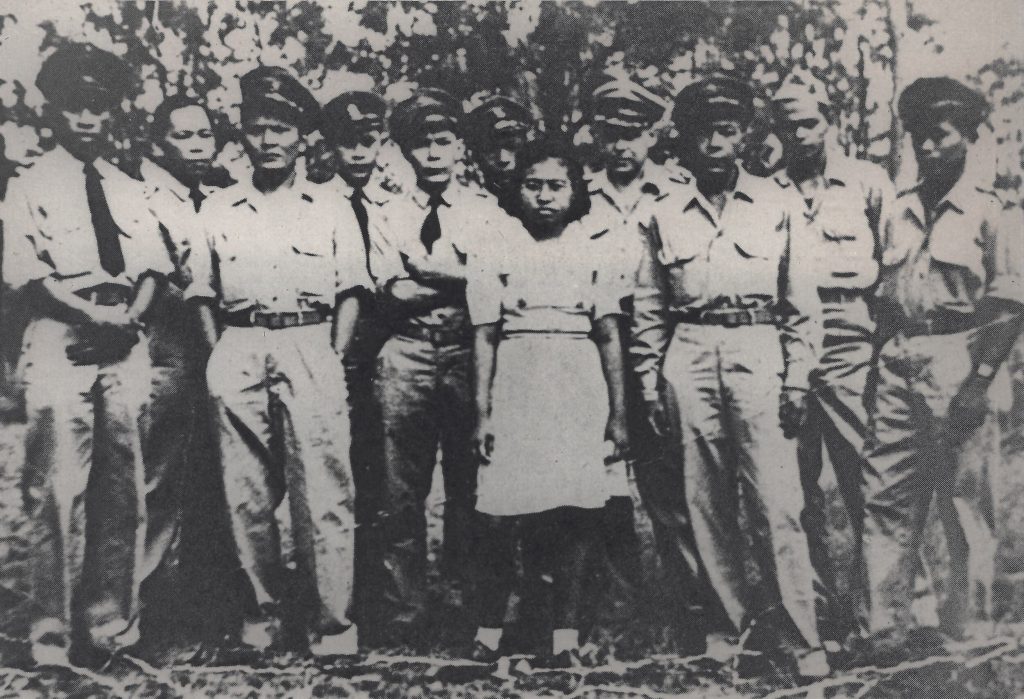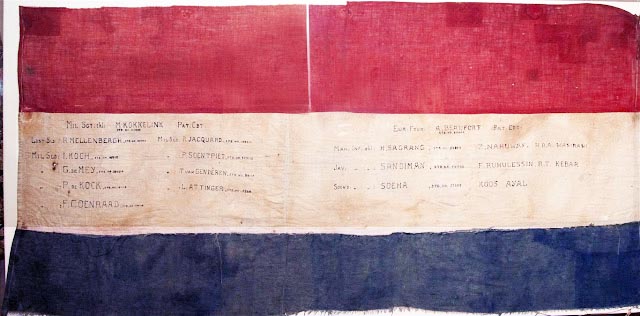Coosje Ayal, also known as Costavina Aya Ayal, left an indelible mark as a formidable resistance fighter in Western New Guinea during World War II. Born on 15 April 1926, in the village of Titawaai on the island of Nusa Laut in the Moluccas, her early life took a significant turn when, at the age of six, she was adopted by her aunt Tina and uncle Seth Nahuway. The family relocated to Manokwari in Western New Guinea, where Ayal’s exposure to the Dutch colonial government’s influence, owing to her uncle’s civil service role, led her to attend a Dutch school. It was here that she became proficient in the Dutch language.
The onset of the Japanese invasion of the Dutch East Indies prompted Ayal’s uncle, a civil servant, to play a crucial role in hiding weapons, food, and ammunition in the jungle. As the Japanese fleet entered Dore Bay on 12 April 1942, Coosje Ayal, at the age of sixteen, was already part of an armed militia of 62 individuals led by KNIL Captain Johannes Bernardus Herman Willemsz Geeroms. This guerrilla group, including Ayal, endured thirty months in the jungle, wearing soldier’s uniforms, handling firearms, and performing various tasks, from cooking to caring for the wounded. The group, surviving under KNIL Sergeant Mauritz Christiaan Kokkelink, was finally relieved by the Allies on 4 October 1944. Tragically, Ayal’s aunt was among those who lost their lives at the hands of the Japanese.
Post-war, Ayal pursued nurse’s training in Brisbane, Australia, serving in the Royal Netherlands East Indies Army Women’s Corps, where she rose to the rank of corporal. In 1947, she married Dutch Caribbean soldier Henry Evers. Their journey together took them to Nusa Laut, the Netherlands, and the Netherlands Antilles. Returning to the Netherlands in 1964, Ayal initially worked in a packaging factory before establishing her own catering company. Notably, from 1988 onward, she received a Resistance pension.
Ayal’s unwavering commitment to honoring the National Remembrance on 15 August 1945 and her compelling accounts of the New Guinea resistance group’s evasion of Japanese occupiers made her a prominent figure. She passed away on 28 March 2015, receiving a military funeral with honors on 3 April, held at the Grote of Sint-Laurenskerk in Rotterdam.
Recognition for her valor came in the form of the Cross of Merit in 1946 and the Resistance Memorial Cross in 1981. Additionally, Ayal was bestowed with the Mobilisation War Cross, the Decoration for Order and Peace, the Wound Badge, and the Veteran’s Badge. In a poignant tribute, on 17 March 2023, the Rembrandtweg in Ridderkerk was officially renamed the Coosje Ayalstraat, etching her name permanently into the annals of history.

From left to right: Nahuwae, soldier Sagrang, soldier Soeha (Soendan), soldier Guus de Mey, sergeant M.Ch. Kokkelink, soldier P.P. de Kock, Coosje Ayal-Nahuwae, fourier A.J.C. Beaufort, Private R. Jaquard, Private L. Attinger and Private Sandiman.
Source: Archives Royal Netherlands Army.


Video Interview with her son and daughter (in Dutch)
Video interview with her granddaughters (in Dutch)

